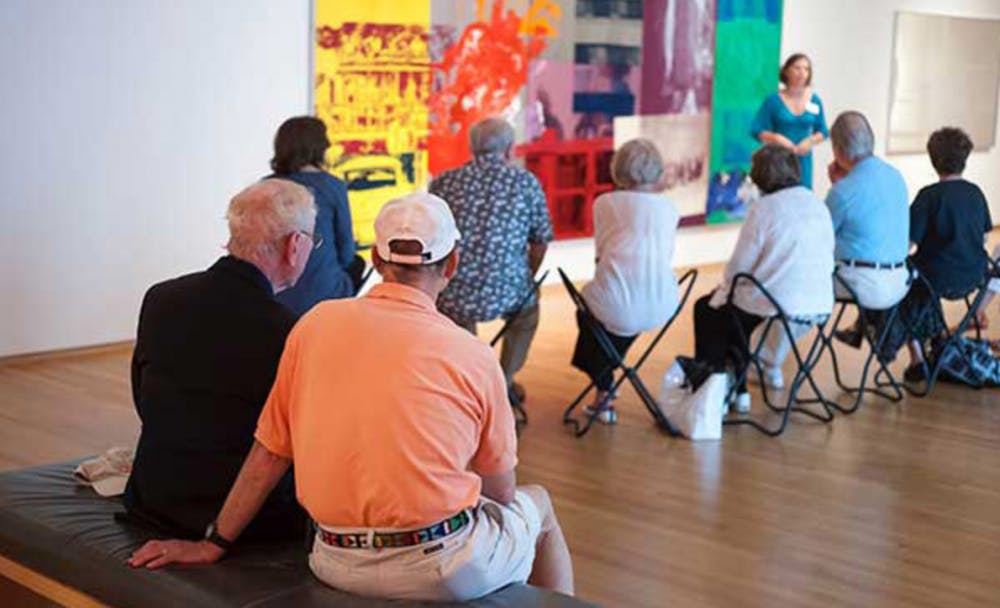People with Alzheimer's disease face many difficulties in everyday life, but a program created by the Nasher Museum is working to make sure these visitors do not miss out on experiencing art.
The Nasher Museum's Reflections program involves museum tours designed for visitors with Alzheimer’s disease and related dementia. This includes guided discussions through the galleries and hands-on art experiences.
“[Reflections] is a lot more accommodating for things like wheel chairs and sitting down," said sophomore Brittany Halberstadt, who works as education assistant for the program. "So we put out chairs in front of all of the works that we’re going to look at, and we only choose four pieces.”
Although the program has existed since 2014, the tours have been strictly limited to people with Alzheimer's disease who belong to local nursing homes and Duke-affiliated support groups like the Early Stage Alzheimer's Support Program. However, in April the program will be open to the general public, allowing anyone with Alzheimer's at any stage to participate individually.
Halberstadt noted that he tours will be offered on the fourth Tuesday of every month and will consist of a gallery viewing and hands-on art projects or live music.
In comparison to the Nasher’s current K-12 art tours, the Reflections program focuses on making the museum’s art more accessible—both physically and mentally—for its participants, she explained.
Reflections tour guides are trained to ask “accessible questions” that are engaging such as “what colors do you see?” and “how does that make you feel?” rather than comment on the style of the pieces, Halberstadt noted. The guides also avoid asking questions that may require participants with Alzheimer's or memory loss to trace back through their memories.
"[We] focus on the present and the direct feelings when they interact with the works of art,” said junior Tina Zhao, a student guide for the Reflections program.
Zhao added that the her job is to create a “fun social environment” for the group by encouraging conversation between the participants.
Jessica Kay Ruhle, director of education and public programs at the Nasher, also noted that the Reflections program is designed as a safe space for visitors and their caretakers.
“The visitor with dementia and the care partner know that they are on a tour specifically with and for people sharing their same experiences,” she said. “This prevents any awkwardness or embarrassment when words are forgotten or if somebody has a bad day.”
During the tour, visitors have an opportunity to participate in arts and crafts, like painting or ceramics, and can listen to live music. Ruhle explained that the art projects and music can allow visitors to showcase their creativity and communicate—even if they struggle to connect verbally.
“The art making and music are powerful experiences for visitors with dementia," she said. "Making art and music allows them to express themselves in another medium."
When asked about visitors’ reactions to the tours, Ruhle said that the Reflections program has been well-received by the participants.
The guides also enjoy the experience, Zhou noted.
“I am excited to learn from the group as I walk through the gallery with them,” she said.
Get The Chronicle straight to your inbox
Signup for our weekly newsletter. Cancel at any time.

